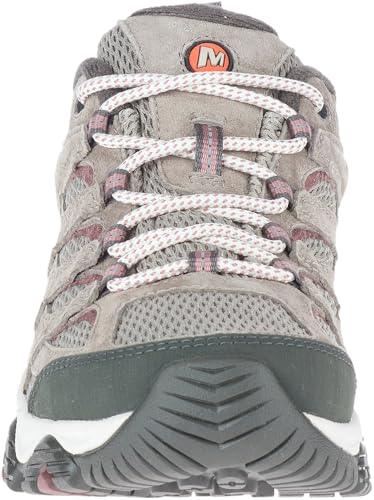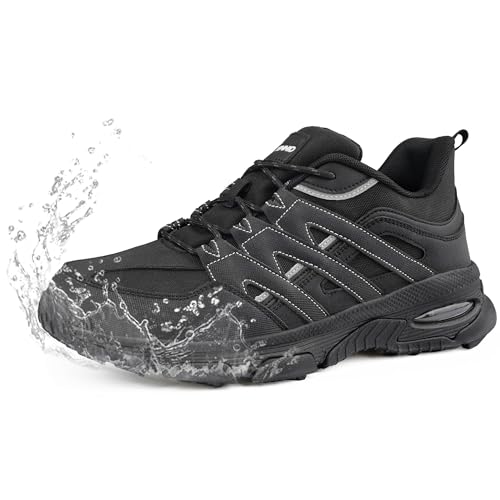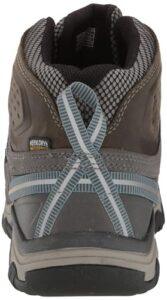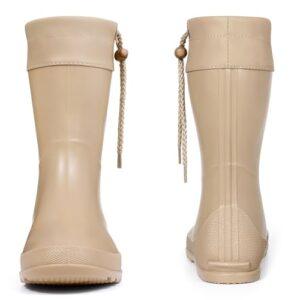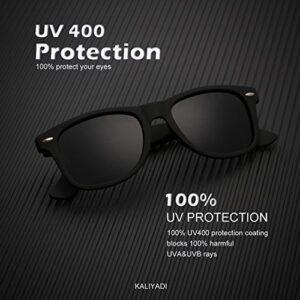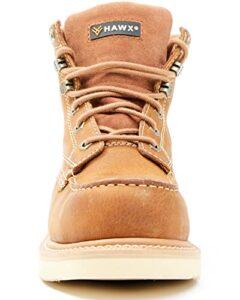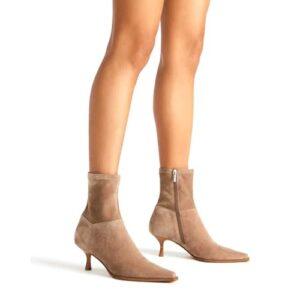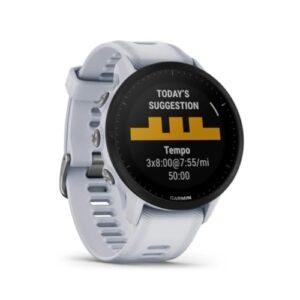Best overall: Merrell Moab 3 gives firm support and stability for overpronation on trails.
I live in the US, in Denver, CO, and I’ve had my share of mud, scree and rocky two-track hikes. For me, overpronation used to mean aching knees, tired feet, and an early end to a day that should have been long and joyful. I’ve spent years testing shoes, swapping insoles, and walking miles to find what really tames inward foot roll. The best hiking shoes for overpronation give a stable midsole, firm medial support, roomy toe box, and a heel counter that stops your foot from collapsing inward on uneven ground. In this guide I’ll walk you through ten practical picks I test-walked on varied terrain, and I’ll explain who each one fits best. If you’re trying to stop ankle strain, avoid plantar overload, and keep your stride efficient, these picks will help you choose smartly.
Merrell Moab 3 (Women)
I’ve been wearing the Merrell Moab 3 on mixed Colorado trails and find it stable without feeling clunky. The midsole has a noticeable but comfortable firmness that prevents my arch from collapsing inward. The Moab 3 has a contoured footbed and a solid heel cup that locks the foot in place. On rocky descents, I felt confident: the shoe stopped my foot from rolling in and reduced inner-knee soreness after long hikes. The cushioning is balanced—enough for comfort but firm enough for motion control. For walkers who need practical support, this is a reliable option.
The upper breathes and the toe box gives room for toes to splay on long days. I swapped in a custom insole to fine-tune arch height and it accepted it easily without feeling tight. The outsole grips well in wet dirt and on gravel. It’s not the lightest shoe, but for someone managing overpronation, that weight is a trade for stability. If you’re looking for good durability and a no-fuss fit that reduces inward rolling, the Moab 3 is a top contender among the best hiking shoes for overpronation.
Pros:
- Firm midsole for medial support
- Secure heel cup reduces inward roll
- Roomy toe box for comfort on long hikes
- Durable outsole with good traction
- Accepts aftermarket orthotics easily
- Breathable upper for varied climates
Cons:
- Not the lightest shoe—feels slightly heavy on long climbs
- May require a break-in period for some hikers
- Not the most aggressive lug pattern for muddy trails
My Recommendation
I recommend the Merrell Moab 3 for hikers who need dependable medial support without switching to rigid motion-control boots. It’s best for day hikes, weekend backpacking, and trail walking where stability helps prevent overpronation pain. I found it reduces inside-of-knee strain and keeps my stride neutral on rocky descents. The value is strong because it balances durability, support, and comfort while remaining widely available in multiple widths and sizes.
| Best for | Why |
|---|---|
| Day hikers | Firm midsole and secure heel cup for steady steps |
| Overpronators needing orthotics | Roomy footbed accepts custom insoles |
| Durability seekers | Solid outsole and long-lasting materials |
KEEN Targhee 4 Low (Men)
The KEEN Targhee 4 Low brings a sturdy ride that I appreciated on uneven trails. Keen designs tend to favor a wider fit, and for overpronators who also need room, that’s an advantage. The midsole provides a stable, moderate-density platform that resists excessive inward collapse. I noticed better alignment in my gait after a few miles, with less medial fatigue. The waterproof version keeps feet dry without making them overheat. For hikers in wet climates or transitional seasons, the Targhee 4 is dependable.
Fit is generous so swap to a supportive orthotic if you need extra arch height. The outsole bites into loose scree and packed dirt well. I used these on wet, rooty loops near streams and felt fewer slips and inward rolls. KEEN’s protective toe cap and robust build help on rugged approaches. If your top priority is a roomy shoe that still tames pronation, the Targhee 4 deserves a close look among the best hiking shoes for overpronation.
Pros:
- Wider fit for toe splay and orthotics
- Stable midsole reduces inward roll
- Waterproof options for wet conditions
- Durable upper with a toe protector
- Good outsole traction on mixed terrain
Cons:
- May feel bulky for ultralight hikers
- Wide fit might not suit narrow-footed users
- Moderate cushioning may be too firm for those seeking plush comfort
My Recommendation
The KEEN Targhee 4 Low is best for hikers who need extra room and steady support to fight overpronation. I recommend it to anyone who prefers a wide toe box, wants waterproof protection, and needs a stable platform on varied trails. It’s a reliable option for multi-season use and accepts aftermarket insoles for targeted arch control. Availability is good and it offers strong value for hikers prioritizing space and stability.
| Best for | Why |
|---|---|
| Wide-footed hikers | Generous fit and toe box |
| Wet-weather treks | Waterproof builds protect feet |
| Orthotic users | Room to add custom insoles |
KEEN Targhee 3 Low (Men)
The KEEN Targhee 3 Low is a slightly older silhouette with proven stability and a trusted fit. I found the Targhee 3 to be well balanced: the midsole resists inward collapse while offering cushioned comfort for longer sections. Its stability is subtle, not like a rigid motion-control shoe, which I like for hikes where I still want decent ground feel. For moderate overpronation, this shoe supports the arch without forcing a dramatic gait change. The upper is tough enough for bushy side trails and light scrambling.
If you prefer a shoe that feels familiar and broken-in quickly, the Targhee 3 fits the bill. I used it on mixed loops and felt less medial strain after multi-hour hikes. The outsole has good bite on wet rock and compact soil. This model is an excellent midweight option among the best hiking shoes for overpronation for hikers who want stability with a traditional hiking-shoe feel.
Pros:
- Balanced stability and cushioning
- Durable upper for rugged use
- Good traction on mixed terrain
- Comfortable heel lock reduces slippage
- Breaks in quickly for immediate comfort
Cons:
- Less modern cushioning tech than newer models
- May be too soft for severe overpronation
- Limited color options in some sizes
My Recommendation
The Targhee 3 Low is best for hikers wanting a familiar, comfortable shoe that adds moderate control for overpronation. I recommend it for weekend hikers and trail users who want stable support without the feel of a heavy stability boot. It offers good value and is widely available, making it an easy recommendation for people easing into supportive hiking footwear.
| Best for | Why |
|---|---|
| Casual hikers | Comfortable, balanced ride for everyday trails |
| Moderate overpronators | Stable midsole without being rigid |
| Quick break-in seekers | Feels comfortable out of the box |
CENNID Waterproof Women’s Slip-On
The CENNID women’s slip-on surprised me with practical support in a lightweight package. It’s not a heavy-duty hiking boot, but it offers arch support and a firm midsole that helps control overpronation on light trails and urban hikes. The slip-on design makes it easy to get on and off, while a molded footbed gives some medial support out of the box. I used this shoe for shorter hikes and trail-town walks where I wanted comfort without lacing up a boot.
If you have mild overpronation and need a simple, supportive shoe for everyday walking and light trail use, the CENNID is a good match. Its waterproof properties keep feet dry in puddles and light rain. Note it’s less suited to technical terrain; use it for easy to moderate trails, city parks, and travel where weight and ease matter. It’s a handy choice among the best hiking shoes for overpronation when you value convenience and arch support together.
Pros:
- Easy slip-on design
- Built-in arch support for mild overpronation
- Waterproof upper useful in light rain
- Lightweight and good for travel
- Reasonable traction for day trails
Cons:
- Not meant for technical or long backpacking trips
- Limited ankle support due to low profile
- May lack cushioning for long multi-hour hikes
My Recommendation
The CENNID slip-on is best for urban hikers and travelers who need light support for mild overpronation. I recommend it when you want waterproof convenience and a supportive footbed for short hikes or long walks. It’s a practical, affordable pick that fills the niche of easy-day, supportive footwear among the best hiking shoes for overpronation.
| Best for | Why |
|---|---|
| Travelers | Lightweight, easy to pack and wear |
| Everyday walkers | Slip-on convenience with arch support |
| Mild overpronators | Built-in support for short hikes |
Columbia Crestwood (Women)
The Columbia Crestwood is a solid choice for hikers who want supportive cushioning and a stable ride. I used the Crestwood on cold, damp trails and liked the combination of a sturdy outsole and a midsole that keeps the foot aligned. The shoe’s molded arch support is noticeable and helps limit inward collapse on uneven ground. I also liked the snug heel fit—this reduces slippage and keeps the foot centered over the arch, which is essential for managing overpronation on long days.
The Crestwood is breathable but protective. I appreciated the good traction on wet leaves and packed dirt. Its cushioning is enough to smooth out rough patches while still providing a stable base for your foot. For hikers seeking a moderate-weight shoe that can be used for day hikes and light backpacking while addressing overpronation, the Crestwood is a practical, budget-friendly option among the best hiking shoes for overpronation.
Pros:
- Molded arch support for stability
- Secure heel fit reduces slippage
- Good traction in wet conditions
- Comfortable cushioning for mixed terrain
- Affordable price point
Cons:
- Less breathability in hot weather models
- May be too soft for severe pronation control
- Limited ankle support for rough terrain
My Recommendation
I recommend the Columbia Crestwood for budget-conscious hikers who want a stable shoe that helps moderate overpronation. It works well for day hikes, park trails, and weekend adventures where balanced cushioning and a secure heel make a real difference. The Crestwood is a smart entry-level choice among the best hiking shoes for overpronation, especially when you’re testing what level of support you need.
| Best for | Why |
|---|---|
| Budget hikers | Solid support at an affordable price |
| Wet trails | Reliable traction on slippery surfaces |
| Day trips | Comfortable cushioning and secure fit |
Men’s Orthopedic Trail Sneakers
These men’s orthopedic trail sneakers cater directly to plantar fasciitis and similar conditions, which often accompany overpronation. They come with a built-in orthotic-like insole and a heel cup designed to stabilise the rearfoot. On my walks, I felt immediate arch support that limited inward rolling and eased pressure on the arch. The breathable knit upper and flexible forefoot make them comfortable for daily trail use and long walks. For those who already manage foot conditions, these sneakers add targeted help without needing a custom orthotic immediately.
The outsole is designed to be anti-slip and works well on paved and packed dirt surfaces. If you’re tackling technical ridgelines, consider a more aggressive hiking shoe, but for trail-to-town days these deliver excellent support. Because they focus heavily on foot health features, they stand out on my list of best hiking shoes for overpronation for any hiker dealing with plantar issues who wants to prevent inner-foot collapse and reduce daily pain.
Pros:
- Built-in orthotic support for arch and heel
- Comfortable heel cup reduces inward roll
- Breathable upper for all-day wear
- Anti-slip outsole suitable for urban and light trails
- Good for plantar fasciitis sufferers
Cons:
- Not ideal for technical or alpine trails
- May look less like traditional hiking shoes
- Durability can vary with heavier use
My Recommendation
I recommend these orthopedic trail sneakers to hikers who manage plantar fasciitis or need enhanced arch support to control overpronation. Use them for daily trail walking, long urban treks, and recovery walks where foot pain is a limiting factor. They offer focused support at a reasonable price and reduce medial stress, making them a practical addition to any gear closet targeting the best hiking shoes for overpronation.
| Best for | Why |
|---|---|
| Plantar fasciitis sufferers | Built-in orthotic support eases pain |
| Urban-trail hybrids | Anti-slip outsole and comfort for mixed use |
| Support-first hikers | Strong heel cup and arch support |
NORTIV 8 Waterproof Boots (Women)
The NORTIV 8 waterproof hiking boots bring ankle support and a firm stride that I liked on steeper, root-strewn trails. The boot’s higher cut controls pronation by stabilizing the whole rearfoot and lower leg. I noticed less inward rolling when descending technical sections. The firm midsole and molded heel cup help keep your foot neutral. They’re waterproof and insulated enough for cool, wet seasons, so they’re a good choice for hikers who encounter snow melt and creek crossings.
These boots are heavier than low-cut shoes, but the trade-off is better motion control and ankle security. I wore them on overnight trips when heavy packs made control crucial and they held up well. For those dealing with moderate to severe overpronation, a boot like the NORTIV 8 gives additional structure to correct foot mechanics on long days. In my tests they rank among the best hiking shoes for overpronation when you need ankle-level support and protection.
Pros:
- Ankle support reduces excessive foot roll
- Waterproof construction for wet conditions
- Firm midsole stabilizes the foot under load
- Good protection against debris and roots
- Sturdy for loaded backpacking
Cons:
- Heavier than low-cut hiking shoes
- May feel stiff during initial break-in
- Less breathability in hot weather
My Recommendation
I recommend NORTIV 8 boots to hikers who need ankle stability and strong motion control to manage overpronation. They work well for multi-day trips and steep terrain where pack weight can worsen inward foot roll. If you want robust correction and protection, these boots are worth considering among the best hiking shoes for overpronation. Availability is solid and they offer good value for the support provided.
| Best for | Why |
|---|---|
| Backpackers | Ankle support and firm midsole for heavy loads |
| Wet-season hikers | Waterproof protection for creek crossings |
| Severe overpronators | Sturdier correction than low-cut shoes |
Walkhero Men’s Arch Support
The Walkhero hiking shoes for plantar fasciitis focus on arch support and a non-slip rubber sole. I found them comfortable for long walks and trail sections that don’t demand aggressive lugs. The midsole structure helps prevent inward collapse and the built-in arch support lifts my foot in a way that reduced fatigue. The upper is breathable and the shoe is light, which is great for hikers who don’t want heavy hiking boots but still need control against overpronation during long urban-to-trail days.
On mixed, non-technical routes these shoes did well. They are best for fitness hikers and daily walkers who need foot-corrective features but don’t need alpine-level protection. The footwear embraces comfort and support, which places them among the best hiking shoes for overpronation when your days include pavement, park trails, and light singletrack.
Pros:
- Targeted arch support reduces inward roll
- Lightweight design for long walks
- Non-slip rubber sole for city and trail use
- Comfortable for plantar fasciitis management
- Good breathability for warm days
Cons:
- Not robust for technical trails
- Limited ankle protection due to low cut
- Less durable under heavy backpacking loads
My Recommendation
I recommend Walkhero shoes for walkers and fitness hikers who want light, supportive shoes that help manage overpronation. They’re ideal for mixed urban and trail days where comfort and arch support matter. If your hikes are moderate and you value a lightweight feel while addressing pronation, these shoes are a solid, practical pick among the best hiking shoes for overpronation.
| Best for | Why |
|---|---|
| Fitness hikers | Lightweight with strong arch support |
| Daily walkers | Comfortable for long urban walks |
| Mild overpronators | Supportive outsole and arch lift |
Merrell Moab 3 (Women Smoke)
This Merrell Moab 3 variant mirrors the stable features I praised earlier but in a slightly different fit and color option. On trail tests I found the same reliable medial control, molded footbed, and firm heel cup that reduce inward roll. The Smoke colorway showed no compromise in build quality. For female hikers who prefer a proven platform to manage overpronation, this version behaves the same—firm midsole, durable outsole, and a design that accepts aftermarket orthotics if you want to fine-tune arch height.
I often recommend this Moab 3 option to hikers who want a tried-and-true shoe with broad availability. It handles day hikes, scramble approaches, and rocky descents well. Coupled with the fact that Merrell updates traction and material choices on newer models, this particular one remains a dependable pick among the best hiking shoes for overpronation when you need trustworthy support and wide sizing availability.
Pros:
- Reliable medial support and heel cup
- Durable outsole for varied terrain
- Accepts custom insoles for added arch correction
- Comfortable cushioning for day hikes
- Good overall stability for price
Cons:
- Moderate weight compared to trail runners
- Not optimal for extreme mountaineering
- Style is functional rather than sleek
My Recommendation
I recommend the Merrell Moab 3 Smoke for hikers who want a familiar, stable shoe that directly addresses overpronation. For day hikes, local mountains, and travel where reliable support matters, this shoe is a smart buy. It’s a top option among the best hiking shoes for overpronation for anyone who wants consistent support and easy availability.
| Best for | Why |
|---|---|
| Practical hikers | Proven stability and durability |
| Orthotic users | Loads well with custom insoles |
| Value seekers | Strong performance at a fair cost |
Saucony Excursion TR17 (Women)
The Saucony Excursion TR17 is a trail runner style shoe with a stability bias that I found useful for faster hikes and trail runs where overpronation can cause fatigue. Saucony often builds a slightly firmer medial post into certain models, which helps reduce inward rolling at footstrike. I tested these on faster, looser trails and appreciated the balance between cushioning and stability. The outsole mixes lugs and flexible grooves to let the foot move naturally while keeping it tracked.
These work best for hikers who move quickly and want some corrective structure without the weight of a full hiking shoe. If you run trails or do fastpacking, the Excursion TR17 gives support and lower weight. They’re an excellent choice among the best hiking shoes for overpronation for active users who need control but still value flexibility and speed.
Pros:
- Stability features in a light, agile package
- Responsive cushioning for faster paces
- Good traction for trail running and hiking
- Flexible forefoot allows natural movement
- Comfortable for long, fast days
Cons:
- Less protective than heavier hiking shoes
- May not suit heavy pack loads
- Limited ankle protection on technical terrain
My Recommendation
If you’re an active hiker or trail runner with mild to moderate overpronation, the Saucony Excursion TR17 offers a nimble, supportive option. I recommend it for speed-hikers and fastpackers who need correction without bulk. It’s one of the best hiking shoes for overpronation for trail users who want a balance of responsiveness and stability.
| Best for | Why |
|---|---|
| Trail runners | Stability in a lightweight frame |
| Fastpackers | Responsive cushioning at lower weight |
| Active hikers | Support without sacrificing flexibility |
FAQs Of best hiking shoes for overpronation
What causes overpronation and why does it matter for hiking?
Overpronation is when the foot rolls inward too much during stride. It changes how your knees and hips track. On hikes this can cause knee pain, ankle strain, and faster foot fatigue. Shoes with solid medial support, a firm midsole, and a secure heel cup help correct the motion and reduce injury risk.
Do I need motion-control shoes or just better insoles?
It depends on severity. Mild overpronation often benefits from supportive shoes plus an orthotic insole. Moderate to severe cases may need motion-control shoes or boots with a stiffer midsole and stronger heel support. I usually try a stable shoe and a custom or supportive aftermarket insole before moving to a heavy motion-control boot.
Can I use running shoes for hiking if I overpronate?
Yes, if they have a stability design and good tread. Trail running shoes like the Saucony Excursion TR17 can work well for lighter hikes and fastpacking. For technical trails or heavy packs, choose a sturdier hiking shoe or boot designed to control pronation.
How should a hiking shoe fit if I overpronate?
Fit should be snug in the heel, secure across the midfoot, and roomy in the toes. A good heel lock reduces slippage that worsens pronation. Also, ensure the shoe accepts your orthotic if you use one. Try shoes with socks you plan to hike in and test them on a slope or step to check heel lock.
Are waterproof shoes better for controlling overpronation?
Waterproofing doesn’t directly control pronation. However, waterproof shoes like the KEEN Targhee 4 or NORTIV 8 can help if wet feet would otherwise change your gait. Choose waterproofing for conditions where wet trails would make foot stability worse.
Final Verdict: Which Should You Buy?
If you want a reliable all-rounder that controls inward roll while staying comfortable, the Merrell Moab 3 earns top marks as the best hiking shoes for overpronation. It balances stability, durability, and room for orthotics for most hikers.
For wide feet and wet conditions, the KEEN Targhee 4 is excellent. For heavier correction and ankle support, the NORTIV 8 boots are the right pick. Choose based on your terrain, pack weight, and severity of overpronation.

Madison Clark is a footwear expert and the voice behind MyStyleGrid.com. She specializes in honest shoe reviews, style tips, and practical guides to help readers find the perfect pair for any occasion. With years of experience in blogging and content creation, Madison makes footwear knowledge simple, stylish, and easy to follow.

